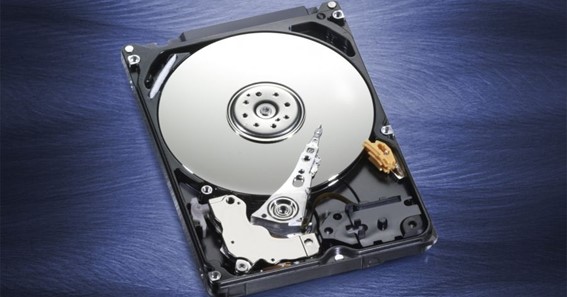Are you curious to know what is a fixed disk? You have come to the right place as I am going to tell you everything about a fixed disk in a very simple explanation. Without further discussion let’s begin to know what is a fixed disk?
In the world of computers, data storage plays a vital role in preserving and accessing information. One key component that has been instrumental in the evolution of storage technology is the fixed disk. Also known as a hard disk drive (HDD), the fixed disk has been a reliable and widely used storage medium for decades. In this blog post, we will explore the inner workings of a fixed disk, its history, and its significance in modern computing.
What Is A Fixed Disk?
A fixed disk, or hard disk drive (HDD), is a non-volatile data storage device used in computers and other electronic devices. It consists of one or more rigid magnetic disks, also known as platters, coated with a thin layer of magnetic material. These platters spin at high speeds while a read/write head accesses and stores data on them.
How Does It Work?
- Platters: Fixed disks typically have multiple platters stacked on top of each other. Each platter is made of a rigid material, often aluminum or glass, and is coated with a magnetic material. Data is stored in binary form as magnetized regions on the surface of the platters.
- Read/Write Head: Positioned above and below each platter is a read/write head. The heads are attached to an actuator arm that allows them to move across the platters, accessing different regions for reading or writing data.
- Spinning and Synchronization: The platters spin at high speeds, usually ranging from 5,400 to 15,000 revolutions per minute (RPM). The rotation is synchronized, meaning that all the platters spin together, allowing the read/write heads to access the corresponding tracks on each platter simultaneously.
- Data Access: To access data, the read/write head moves across the platter’s surface until it is positioned directly above the desired track. The head then either reads data from or writes data to that specific location on the platter.
Significance And Evolution:
Fixed disks have played a crucial role in the advancement of computing technology, offering high-capacity storage for operating systems, applications, and user data. They have provided a reliable and cost-effective means of long-term data storage, making them prevalent in desktop computers, servers, laptops, and other electronic devices.
Over the years, fixed disk technology has continued to evolve, with advancements in storage capacity, data transfer rates, and overall performance. The introduction of technologies like perpendicular magnetic recording (PMR), shingled magnetic recording (SMR), and helium-filled drives has enabled higher storage densities and improved efficiency.
Fixed Disk Vs. Solid-State Drive (Ssd):
While fixed disks have been the dominant storage solution for many years, solid-state drives (SSDs) have emerged as a viable alternative. SSDs use flash memory to store data, providing faster access times, improved durability, and lower power consumption compared to fixed disks. However, fixed disks still maintain an advantage in terms of cost per storage capacity, making them suitable for applications that require large amounts of affordable storage.
Conclusion:
The fixed disk, or hard disk drive (HDD), has been a fundamental component of computer storage for decades. Its spinning platters and read/write heads allow for efficient and reliable data storage and retrieval. Despite the emergence of solid-state drives (SSDs), fixed disks continue to be widely used due to their cost-effectiveness and high-capacity storage capabilities. As technology advances, the fixed disk continues to evolve, adapting to the increasing demands of data storage in the digital age.
If you love learning new things then you then you can read interesting topics here at squareroott.
FAQ
Is A Fixed Disk A Ssd?
A “Fixed Hard Drive” is NOT an SSD (Solid State) drive.
What Is An Example Of A Fixed Disk?
Hard drives in computers are some of the most common examples. Nearly every modern computer has one or more of these drives that store all of the computer’s saved information, including operating system data, applications, documents, and photos.
Is Fixed Hard Disk Same As Ssd?
SSD vs HDD: What’s the difference? HDDs are traditional storage devices with spinning platters that read and write data. SSDs use newer technology that stores data on instantly accessible memory chips. SSDs are faster, quieter, smaller, consume less energy, and more durable.
What Is The Use Of A Fixed Hard Disk?
Fixed hard disk drives store data on magnetically coated disks (known as platters). Used on all computers and are the main method of storing data. This is because they are capable of very fast direct access of files and have very large storage capacities.
I Have Covered All The Following Queries And Topics In The Above Article
What Is A Fixed Disk Linkedin
What Is A Fixed Disk?
What Is A Fixed Mbr Disk
What Is A Fixed Hard Disk
What Is A Local Fixed Disk
What Is A Fixed Hard Disk An Ssd
What Is A Fixed Disk
What is a fixed disk drive
